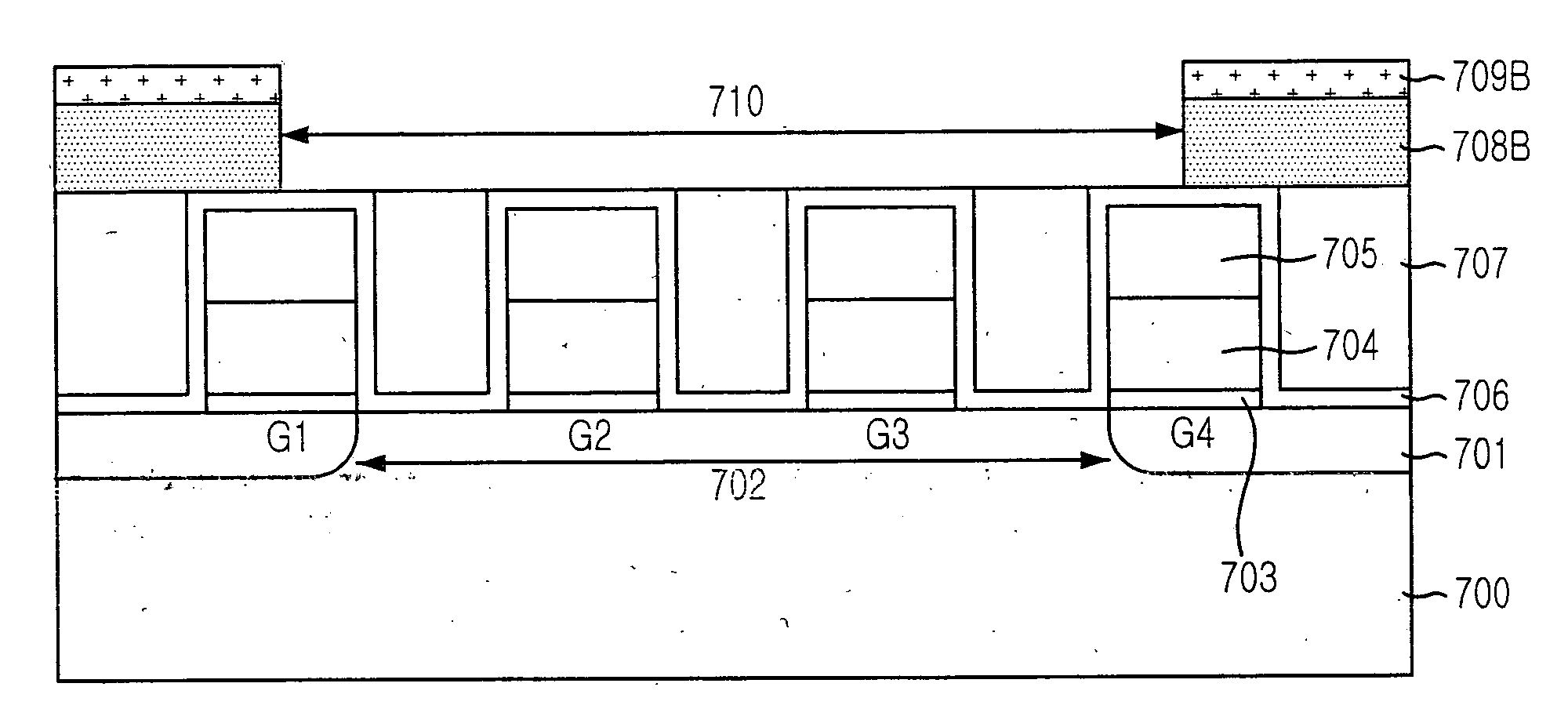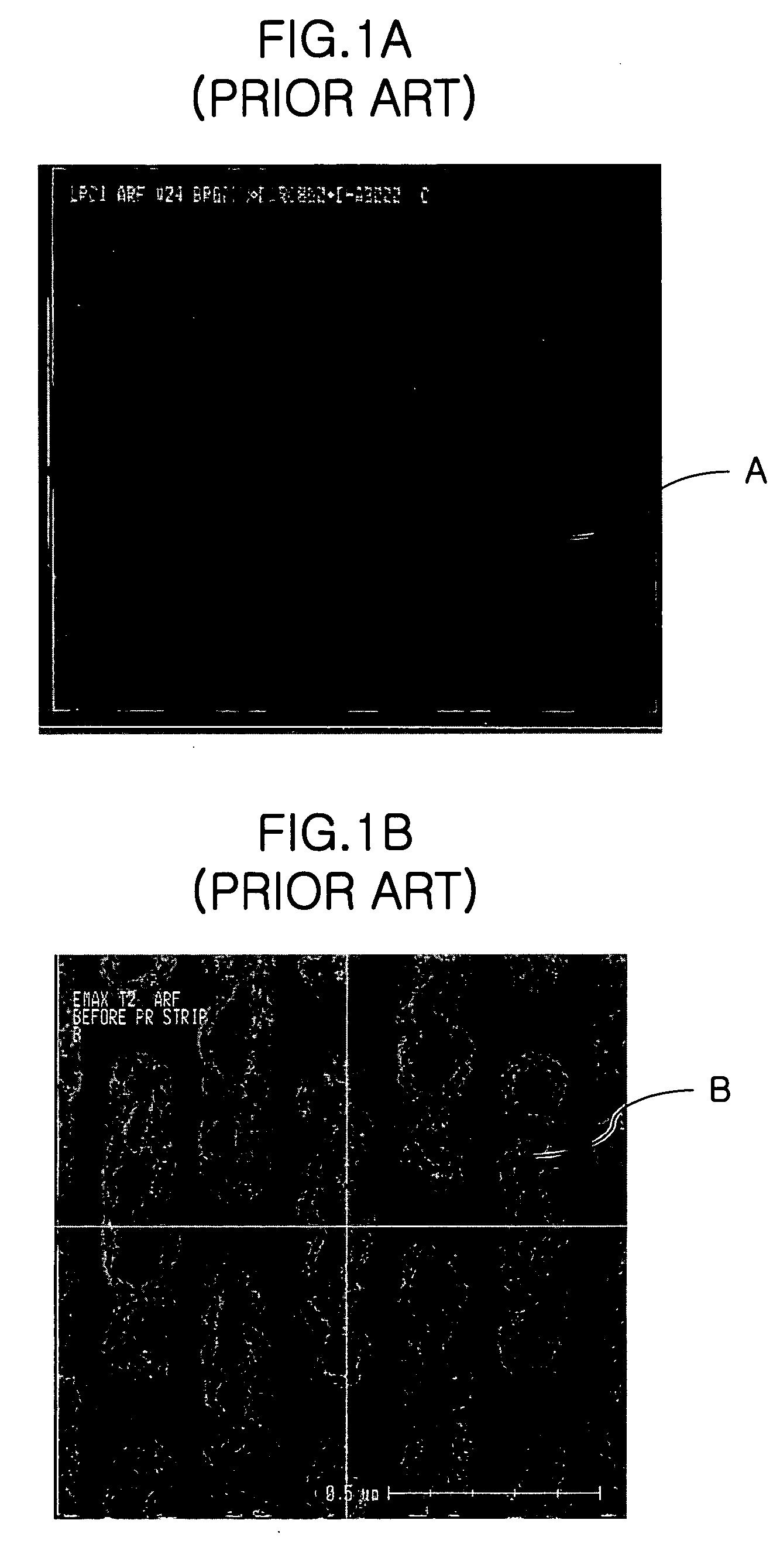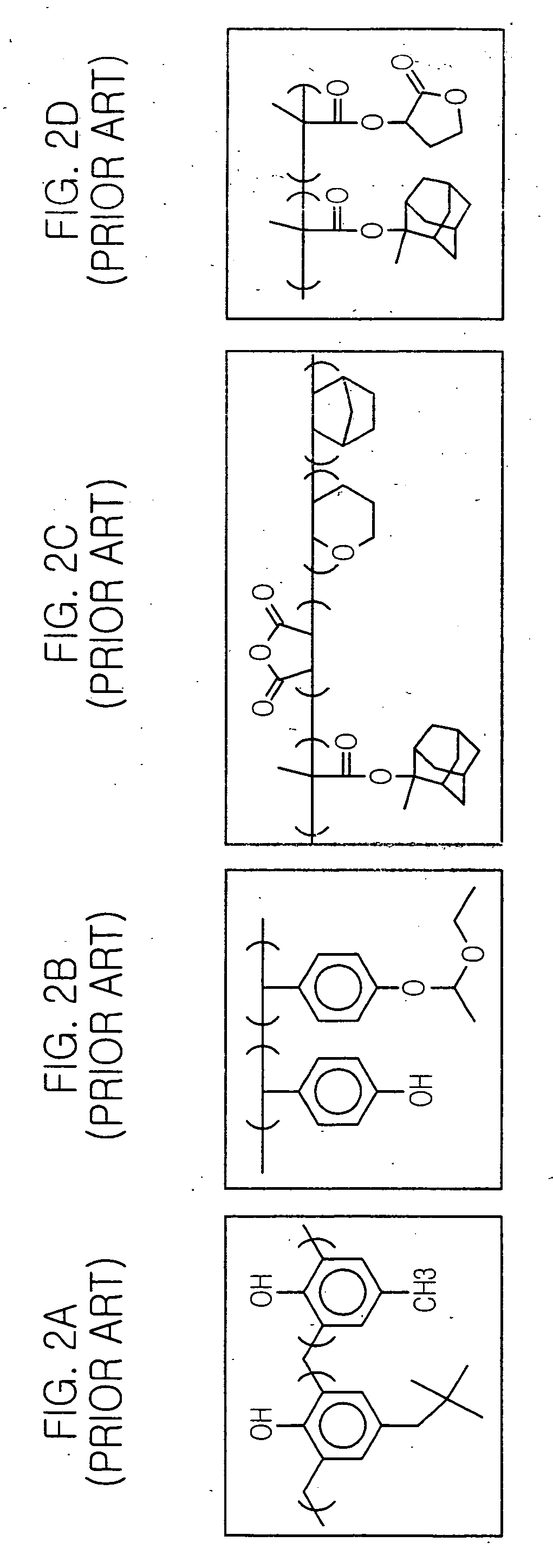Method for forming contact hole in semiconductor device
a contact hole and semiconductor technology, applied in semiconductor/solid-state device manufacturing, basic electric elements, electric devices, etc., can solve the problems of reducing the etching efficiency of the etching process, and producing the above described problems. , to achieve the effect of maximizing the selective ratio of the oxide layer, high resolution and simplifying the process
- Summary
- Abstract
- Description
- Claims
- Application Information
AI Technical Summary
Benefits of technology
Problems solved by technology
Method used
Image
Examples
Embodiment Construction
[0045] Hereinafter, a method for forming a plurality of contact holes in a semiconductor device in accordance with a preferred embodiment of the present invention will be explained in detail with reference to the accompanying drawings.
[0046]FIG. 6 is a flow chart illustrating a SAC etching process in accordance with the present invention. With reference to FIG. 6, the SAC etching process in accordance with the present invention will be explained.
[0047] First, a conductive pattern such as a gate electrode is formed and an etch stop layer is formed thereon at step S601. Subsequently, an inter-layer insulation layer is formed on a substrate provided with the conductive pattern and the etch stop layer at step S602. The inter-layer insulation layer is formed by using a typical oxide layer based material and the etch stop layer is formed by using a nitride layer based material having both insulation and a selective ratio to the oxide layer.
[0048] Subsequently, an upper portion of the i...
PUM
 Login to View More
Login to View More Abstract
Description
Claims
Application Information
 Login to View More
Login to View More - R&D
- Intellectual Property
- Life Sciences
- Materials
- Tech Scout
- Unparalleled Data Quality
- Higher Quality Content
- 60% Fewer Hallucinations
Browse by: Latest US Patents, China's latest patents, Technical Efficacy Thesaurus, Application Domain, Technology Topic, Popular Technical Reports.
© 2025 PatSnap. All rights reserved.Legal|Privacy policy|Modern Slavery Act Transparency Statement|Sitemap|About US| Contact US: help@patsnap.com



